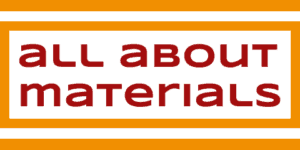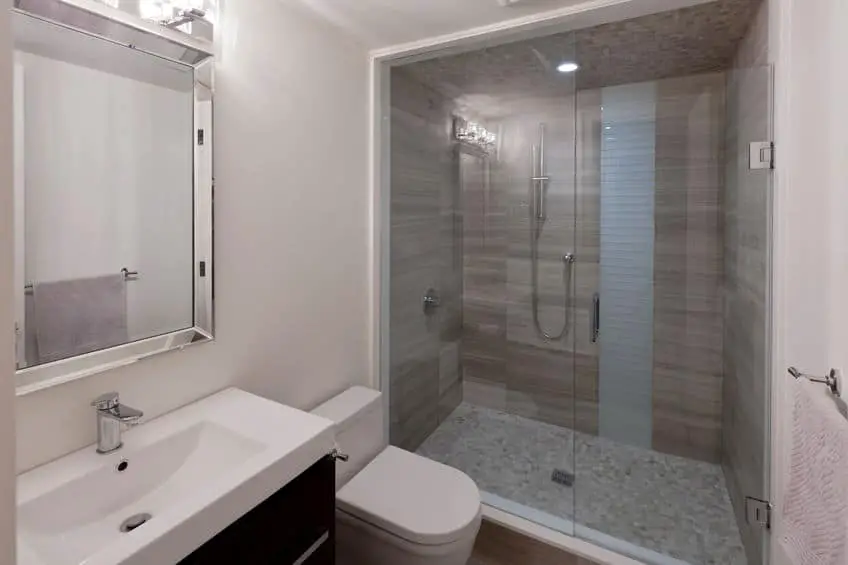This post contains affiliate links.
Showers and bathrooms are high wet areas where all the surfaces in the room will be subjected to high amounts of water and moisture. This is the reason why the building materials that will be installed in these areas should be able to withstand high amounts of moisture without breaking apart.
Tiles are a common finishing surface used for showers but they need to have a good substrate to install on. One good substrate to use is cement boards but can you use cement board in a shower?
Cement boards can be used in a shower because they can be exposed to water and moisture without warping, rotting, and deteriorating. It also does not promote the growth of molds and mildew. Cement boards are also a good substrate to use for tiles, which are commonly installed in showers as well.
Although cement boards can generally be used in any wet areas such as showers and bathrooms, there are other things that you should be considered as well which will be discussed below.
Can You Use Cement Board for Shower Walls?
Cement boards are great to use for shower walls as they can be subjected to high amounts of water and moisture without deteriorating and growing molds. They are impact resistant and form a strong, solid, and stable base for your ceramic or porcelain tiles to install on.
Cement boards are one of the common and widely-known backer board used for shower walls and it is commonly sized at 3 x 5 ft. per sheet and it compliments the common sizes of bathtubs. 4 x 8 ft. sheets are also available but will be a lot heavier and harder to handle than the 3 x 5 ft. sheets.
How Thick Should Cement Board Be for Shower Walls?
When using cement boards for shower walls, the first thing to consider is the cement board thickness to use. Aside from being water-resistant, substrates used for shower walls should be rigid enough to resist deflections. If you are to use a thin flexible substrate, the wall will deflect if you accidentally bump or push against it, which will cause the tile or grout installed over it to crack.
You should be using a minimum of 1/2″ thick cement board for shower walls. This will be rigid and strong enough to resist any deflection or flexing from any impact on the wall. Never use a 1/4″ thick cement board for shower walls as this will deflect and flex if it is pushed or bumped accidentally.
Can You Put Cement Board Over Drywall In Shower?
In showers or bathrooms, Never install cement board over existing drywall in showers or bathrooms. The existing surface should be removed first prior to the installation of the cement board. 1/2″ or 5/8″ thick cement boards should be used and installed directly over the wall studs.
Although there are moisture-resistant drywalls available, they are not completely waterproof. They are not recommended for use in high wet areas such as in showers or bathrooms. If the drywall’s gypsum core gets exposed to water it can deteriorate which can cause the wall surface, with the cement board attached, to fail. This can lead to the tiles and grout to crack.
Even if you applied waterproofing or installed a vapor barrier over the drywall prior to the installation of the cement board, you would still want a safeguard in place just in case these moisture barriers fail.
There are, however completely waterproof cement boards available that can prevent water from penetrating its surface. The manufacturers of these products are confident and allow their cement board to be installed directly over drywall in a shower. Most installers however still want to be cautious and will prefer to remove the drywall entirely and replace them with cement boards instead.
Here’s a video showing how to install cement board in a shower wall.
Can You Use Cement Board for Shower Floor?
Using cement boards for shower floors is not practical and will be hard to achieve. If not done correctly, water can leak into your subfloor and damage it. Most installers would suggest making a mortar shower pan instead, which can be installed with tiles over it as well.
Can you make a shower pan with cement board? You could make a shower pan with cement board but it would be impractical and you would need to be very skilled at handling the cement board. You would be better off just using a regular shower pan instead or using a tile-ready shower pan if you plan on installing tiles to the floor.
For the rest of the bathroom though, a cement board can be used for the floor. A minimum of 1/4″ thick cement board can be used for floors as long as there won’t be any issues with regards to the additional floor thickness. Tiles can’t be installed directly on a plywood subfloor and will need a layer of backer board to install on to. Cement boards are perfect backer board for floor tiles.
If you have a concrete subfloor or substrate then cement boards are no longer necessary as the tiles can be directly installed over concrete.
Do You Put Cement Board Under a Shower Pan?
The cement board does not need to be placed under a shower pan but you can if you want to. In most cases, shower pans are installed directly over the subfloor with a mortar bed and with the cement board edge just abutting the edge of the shower pan.
It does not really matter if you put the cement board under a shower pan or not as long as the the base is flat and solid and the shower pan is installed correctly.
Here’s a video showing some tips on how to install a shower pan over a plywood subfloor.
Can You Use Cement Board on Shower Curb?
Cement boards can be used on shower curb but they should be preformed prior to installation and should only be nailed on the exterior side of the curb. If the cement boards are installed having each face of the curb be a separate piece of cement board, it will require you to nail through the pan liner and can negatively affect the waterproofing of the shower base.
Here’s a good video you can follow on how to create and install a preformed cement board on a shower curb.
Do You Put Cement Board on Shower Ceiling?
Cement boards can be used for shower ceiling but it is not necessary. It is however more durable in showers that are exposed to high moisture or steam because it will not deteriorate or warp as easily as a drywall. If installing tiles on shower ceiling, you can also use cement boards as well.
For any other regular showers that does not build up a lot of steam and moisture, you can use any moisture-resistant materials such as a moisture-resistant drywall above the shower.
Do You Have to Waterproof Cement Board in a Shower?
Most cement boards will need to be applied with a waterproofing system when used in a shower. Cement boards are very porous and will allow water to pass through them. The application of waterproofing will protect the subfloor and wall cavities from exposure to water.
The waterproofing used can be in a form of a vapor barrier placed behind the cement board or with the application of a liquid applied waterproofing membrane or sealant on the outer surface. For wet areas such as in bathrooms and showers, it is crucial that waterproofing is applied correctly. It is most especially important when used as a floor as water can leak to the adjoining rooms or the rooms below it.
James Hardie does have a cement board product that they claim to be 100% waterproof which they say eliminates the need for an additional waterproofing system to be added or applied when used in a shower.
Do I Need a Vapor Barrier Behind Cement Board in Shower?
Vapor barriers need to be installed behind cement boards in shower walls to prevent water vapor from reaching the wall cavity and the studs. Some showers produce water vapors in the form of steam which surface applied waterproofing alone would not be enough as protection.
While liquid applied waterproofing blocks water in liquid form, vapor barriers block water in gas form. Both systems are equally important to use when using cement boards in bathrooms and showers.
All About Materials is a participant in the Amazon Services LLC Associates Program, an affiliate advertising program designed to provide a means for sites to earn advertising fees by advertising and linking to Amazon.com. We also participate in other affiliate programs which compensate us for referring traffic.

